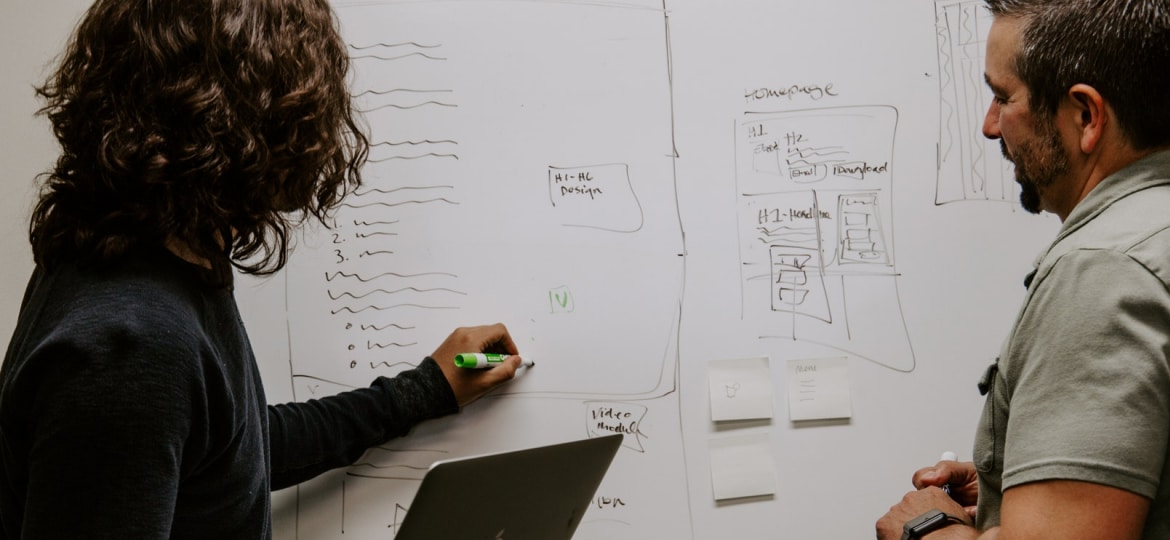Pour réussir le B2 First, nous vous conseillons de bien connaître le contenu et les exercices des différentes parties du test. Dans cet article, concentrons-nous sur la partie 4 de la section Speaking du B2 First, avec :
- Ce qu’est le B2 First et son contenu
- Les consignes et le déroulement de l’exercice 4 de la section Speaking
- Des conseils et des exemples pour réussir cet exercice
- Un point sur la méthode GlobalExam pour réviser le B2 First
L’exercice 4 de la section Speaking est une discussion avec un autre candidat pour démontrer votre maîtrise de l’anglais, à vous de jouer !
Qu’est-ce que le B2 First ?
Longtemps connu sous le nom de Cambridge English First (FCE), le B2 First compte parmi les tests d’anglais les plus reconnus dans le monde. C’est un sésame utile voire indispensable pour intégrer de nombreuses universités prestigieuses, divers grands groupes, entreprises ou organisations internationales, qui font confiance à ce test pour évaluer votre réelle maîtrise de l’anglais.
Le B2 First évalue votre maîtrise de l’anglais sous toutes ses formes. Ainsi, le test est divisé en quatre sections distinctes :
- Compréhension écrite et Use of English
- Expression écrite (Writing)
- Compréhension orale (Listening)
- Expression orale (Speaking)
Chaque section est subdivisée en plusieurs parties, chacune correspondant à un exercice différent. La section Speaking par exemple, se divise en quatre parties durant lesquelles vous serez tester sur votre capacité d’expression à l’oral. Plus spécifiquement, nous traitons dans cet article de l’exercice 4 du Speaking.
Comment se déroule l’exercice 4 du Speaking ?
Le Speaking se déroule sous la forme d’un entretien que vous passez généralement en petit groupe d’un ou deux candidats. L’exercice 4, comme toute la section Speaking, se passe en présence de deux examinateurs : un interlocuteur vous pose les questions et échange avec vous, un évaluateur écoute et prend des notes, sans interaction avec les candidats.
Les exercices de la section Speaking se déroulent en un temps limité : 14 minutes au total pour les 4 exercices. Cela fera donc déjà une dizaine de minutes que vous échangerez sur divers exercices au moment de passer à l’exercice 4.
La 4ème partie de la section Speaking est une poursuite de la discussion entre vous et l’autre candidat, guidée par les questions de l’examinateur, sur les sujets ou problèmes soulevés dans l’exercice de la partie 3. C’est donc un exercice basé sur l’échange et la discussion. La durée de cet exercice est de 4 minutes.
Nos conseils pour réussir l’exercice 4 de la partie Speaking
Nous vous recommandons d’effectuer une bonne préparation au Cambridge First afin de maximiser vos chances d’avoir un bon score.
L’exercice 4 est intimement lié à l’exercice 3, puisque les deux exercices portent sur un contenu de base identique : bien comprendre l’image ou le document de l’exercice 3 est une clé de la réussite de la partie 4 du Speaking.
Donnez votre opinion et veillez à écouter ce que l’autre candidat dit, cela pourra vous aider. L’exercice 4 vise à tester votre capacité à exprimer et justifier des opinions, à être en accord et / ou en désaccord au fil d’une discussion en anglais.
Lorsque vous répondez à une question, regardez l’examinateur, cependant quand vous parlez avec l’autre candidat veillez à ne pas le mettre à l’écart, regardez-le. Écoutez-le attentivement, car vous aurez à rebondir sur ses propos, comme il devra répondre aux vôtres.
Lorsque vous formulez une réponse à une question, veillez à bien argumenter. En argumentant vous montrez que vous maîtrisez le sujet. Il est possible de rebondir sur ce qu’a dit l’autre candidat. Restez cependant poli sans dégrader son argumentaire lorsque vous vous exprimerez. Ne perdez pas de vue que le Speaking consiste en une discussion collaborative avec le second candidat : vous n’êtes pas en compétition l’un vis-à-vis de l’autre.
Exemples
Exemple d’un extrait d’exercice de la base d’entraînement du B2 First de GlobalExam.
Exemple 1 : Vous voyez (document similaire à celui de l’exercice 3) :
Vous répondez à des questions sous forme de dialogue avec l’examinateur :
- Do you think that teenagers spend too much time on the Internet?
- Do you think students do more research on the Internet at home than they do in libraries?
- What do you think are the biggest disadvantages of using the Internet?
Exemple de réponse :
In part I think it’s true that teenagers spend too much time on the Internet but it’s important to remember that the internet is not only used to play games and waste time. People often highlight its negative aspects more than the positive ones. It is like a gigantic library for students today and many young people take advantage of it in order to prepare for school and university. It’s true that people should get away from their devices every now and then and do more exercise and spend time actually talking to people face to face, but I think it’s not true that the internet is more harmful or dangerous than other new technologies in the past. It’s like TV. There were so many people going on about how TV was going to turn us all into brainless robots but the world hasn’t ended yet.
I guess some people just find it hard to see their routines and their world changed so drastically in such a short time because of a new invention. In contrast, those who grow up with a technology often can’t imagine what it would be like to live without it. Do young people use the Internet more than traditional libraries nowadays? I’m not sure. Of course libraries have copies of books that might not be available for free on the internet, so students still have to go there, but more and more materials are scanned and made available online nowadays. It will take some years but sooner or later most study materials will be accessible on the web. It’s difficult to predict what will happen then. I guess there will be fewer and fewer physical libraries left in the future and people will just download what they need. It is a bit sad if you think about all these great old libraries being used less and less, but what can you do?
I hope paper doesn’t disappear completely I must say though. There’s something romantic about it, I reckon. I’ve always loved reading and I do prefer to read a real book or magazine when I want to relax. Work and study are different because you have to do other things at the same time, like writing emails or preparing a presentation. The biggest advantage the Internet has is that it brings everything together in one place. It makes everything so easy and fast. You don’t even have to get up and go anywhere. It’s right there, wherever you go. If you know how to use it, it can provide you with information, tools, communication and even a regular income. Not knowing how to navigate the web today is comparable to not being able to read a while ago. It could leave you completely isolated; especially if you are young. I think there is a major difference between how our parents or grandparents communicated and worked and how we are doing things today.
Exemple 2 : Vous voyez (document similaire à celui de l’exercice 3) :
Vous répondez à des questions sous forme de dialogue avec l’examinateur :
- Do you think that people spend too much time on social media?
- Do you think social media will ever be phased out of society?
- Do you think there are more positive aspects of social media than there are negative?
Exemple de réponse :
I definitely think people spend too much time on social media. It is now a daily routine for people to wake up and check social media within minutes, or while still in bed. It is now becoming something we do without realizing our dependence on it. If you look around on a train or a bus in a big city, you will see almost everyone looking down at his or her phone, on social media or on an app or website. It is reducing interaction between people and therefore causing people to become more introverted and quiet. It can also make people feel lonely or excluded when they see other people’s photos or posts on social media and they are not included. This never used to be an issue in society before social media, so it is obvious that people spend too much time on social media than in the ‘real’ world.
As for being phased out of society, there is no precedent to go off, but I would think that it wouldn’t be phased out of society any time soon. If anything, it will only get more and more advanced with different technology. Although Instagram and Facebook might change, there will always be some form of platform through which people stay connected and communicate with each other.
I think there are more positive aspects of social media than there are negative, but the negative aspects are still important to address. I think it’s important to remember that social media allows people to access information instantaneously from anywhere in the world, no matter the time. This is extremely powerful and it is a tool that our predecessors would never have dreamed of. We can find out about a terror attack or accidents within minutes of it happening, we can influence others with our words and pictures, and we can run businesses through social media. It’s true that people should ensure they are still communicating in person and not relying too heavily on social media, but ultimately having this type of platform allows people to be more vocal and it also encourages people to come together when there is a common thought or idea. The positive aspects are unfortunately used in a negative way sometimes, which makes social media harmful to others. While we can ultimately decide whom we follow or what we see, some people are targeted by bullies or terror groups and are unable to escape the negative messages they’re receiving. People are also becoming too reliant on social media, but again, this is something we can work towards and hopefully can find a good balance in our lives. Social media has a positive impact on our lives and we need it to run business and promote positive messages like gender equality and sex equality. These positives, I think, outweigh the negatives.
Pour en savoir plus sur les autres parties de la section Speaking du B2 First :
Préparer le B2 First avec GobalExam
Plateforme e-learning spécialisée dans la préparation des tests de langue, GlobalExam vous propose une méthode complète pour réussir le B2 First de la Cambridge University.
Avec GlobalExam, vous disposez d’outils pensés pour augmenter vos chances de réussite au B2 First, dès la première tentative l’examen : le mode entraînement est composé de nombreux exercices corrigés, tels que ceux présents dans cet article. Les exercices sont basés sur chacune des parties du B2 First, pour des révisions à votre rythme. Le mode test est très utile pour vous préparer aux conditions réelles de passage du B2 First : questions, format, consignes, temps limité, de véritables tests blancs en ligne pour simuler le jour de l’examen chez vous. À ces deux modes s’ajoutent également un grand choix de fiches de révision complètes.
Grâce à la méthode GlobalExam, vous mettez toutes les chances de réussite au B2 First de votre côté : le jour J, le test n’a plus de secret pour vous !


 OFFERT !
OFFERT !



